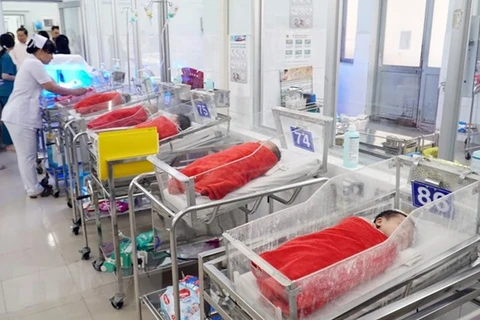Hanoi (VNA) – The multidimensional approach to poverty, which has been adopted by Vietnam for nearly three years, have produced encouraging results, reflected in remarkable improvement in living conditions in disadvantaged areas.
After the MOLISA carried out a project on shifting to the multidimensional approach in poverty measurement, new poverty criteria based on multidimensional approach for 2016-2020 were issued under Decision 59/2015/QD-TTg in 2015.
Under the new approach, poverty measurement was no longer based on only per capita income as in the 2011-2015 period. Instead, the measurement also took into account the access to basic social services which are health care, education, housing, clean water and hygiene condition, and information access. Access to basic social services is measured based on 10 indices, namely adults’ educational level, children’s schooling, access to medical services, health insurance, housing quality, per capita housing area, water for daily life, toilet facilities, telecom services, and assets serving information access.
The poverty line regarding income was also adjusted up in alignment with specific situation in different regions.
A national survey revealed that the multidimensional household poverty rate was 9.88 percent at the time the new approach was adopted. Of which, the number of households living under the poverty income line was 1.7 million, or 7.47 percent of the total. Meanwhile, 573,270 households, or 2.41 percent, lacked access to basic social services.
By 2017, the poverty rate reduced to 6.7 percent, with remarkable improvements recorded in access to social services. For example, the rate of adults lacking access to education dropped from 19.61 percent in 2016 to 16.52 percent at the end of 2017, and the rate of children not able to go to school decreased from 6.77 percent to 5.4 percent.
Meanwhile, the rate of inaccessibility to health care went down from 6.2 percent of households to 5.03 percent, and the rate regarding clean water access fell from 21.21 percent to 17.71 percent. Only 17.47 percent of households lacked access to information as of the end of 2017 compared to 21.25 percent in 2016.
The new multidimensional poverty criteria have helped ministries, sectors and local administrations better focus their resources and efforts on improving access to social services.
The Ministry of Labour, Invalids and Social Affairs (MOLISA) will conduct more in-depth research with a view to perfecting poverty measurement based on the multidimensional approach, providing the foundation for designing policies on poverty reduction and social security.
MOLISA Minister Dao Ngoc Dung said the ministry will propose priorities in investment in poor areas, especially mountainous and ethnic minority areas, with the aim of making greater improvements in living conditions and access to basic social services, reducing the rich-and-poor gap among regions and groups of population, and ensuring fairness among groups of beneficiaries of State support.-VNA
VNA
























